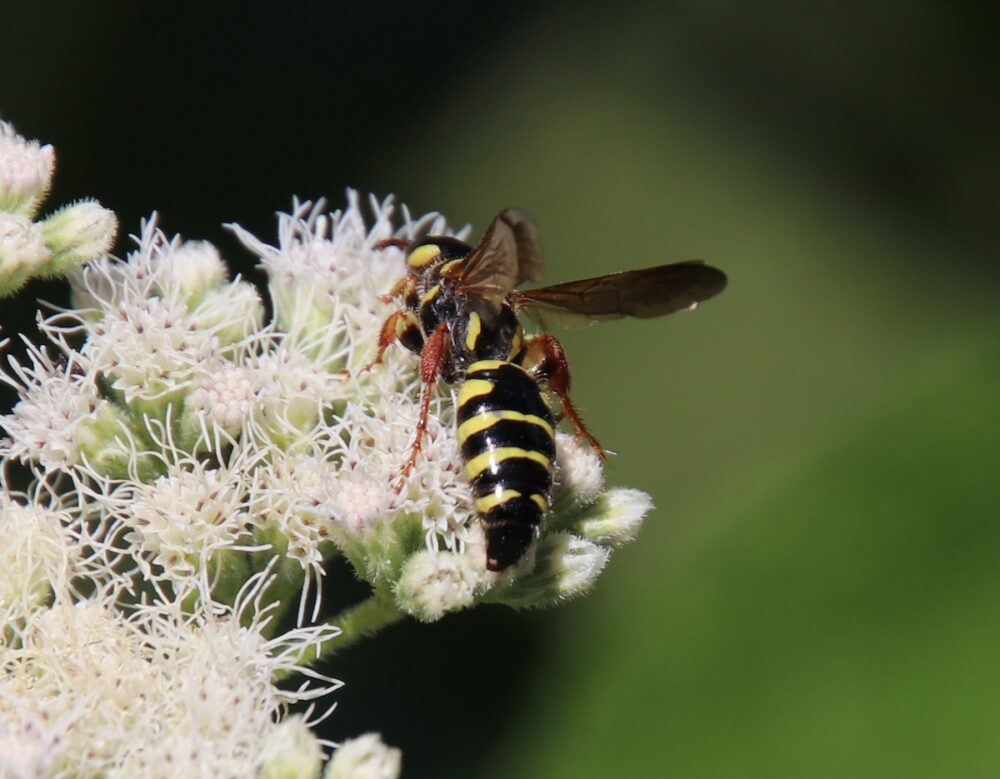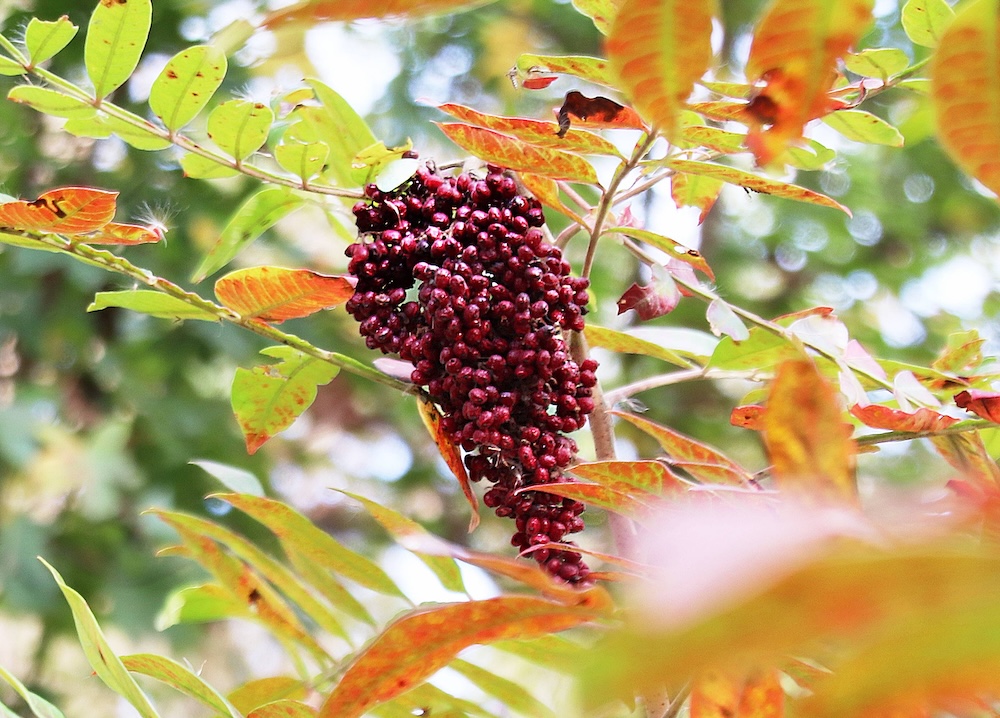Happy Mystery Monday! Can you guess what is pictured in photo #1?

The answer to last week’s mystery is the five-banded thynnid wasp, Myzinum quinquecinctum, pictured in photo #2.

The five-banded thynnid wasp, Myzinum quinquecinctum, is a solitary, late-Summer visitor to flowers across its range. With striking black and yellow bands, these wasps are often mistaken for yellowjackets—a helpful disguise that protects them from predators. Only the females can sting, and even then, they are virtually harmless unless handled.
Unlike social wasps, thynnids do not defend a hive. Females hunt larval scarab beetles, including Japanese beetles and May/June beetles. They use their stinger to paralyze their prey and, instead of dragging their prey away, they instead lay eggs on them where they are found. The males are slender and are often seen congregating on a single plant while the females focus on hunting.
During this time of year, their diet shifts from protein to carbohydrates (sugars), feeding on flower nectar. By preying on pest beetle larvae and visiting blooms for nectar, five-banded thynnid wasps play a quietly important role in our gardens and natural landscapes.
Mystery Monday is sponsored by the Spy Newspapers and Adkins Arboretum.



Write a Letter to the Editor on this Article
We encourage readers to offer their point of view on this article by submitting the following form. Editing is sometimes necessary and is done at the discretion of the editorial staff.